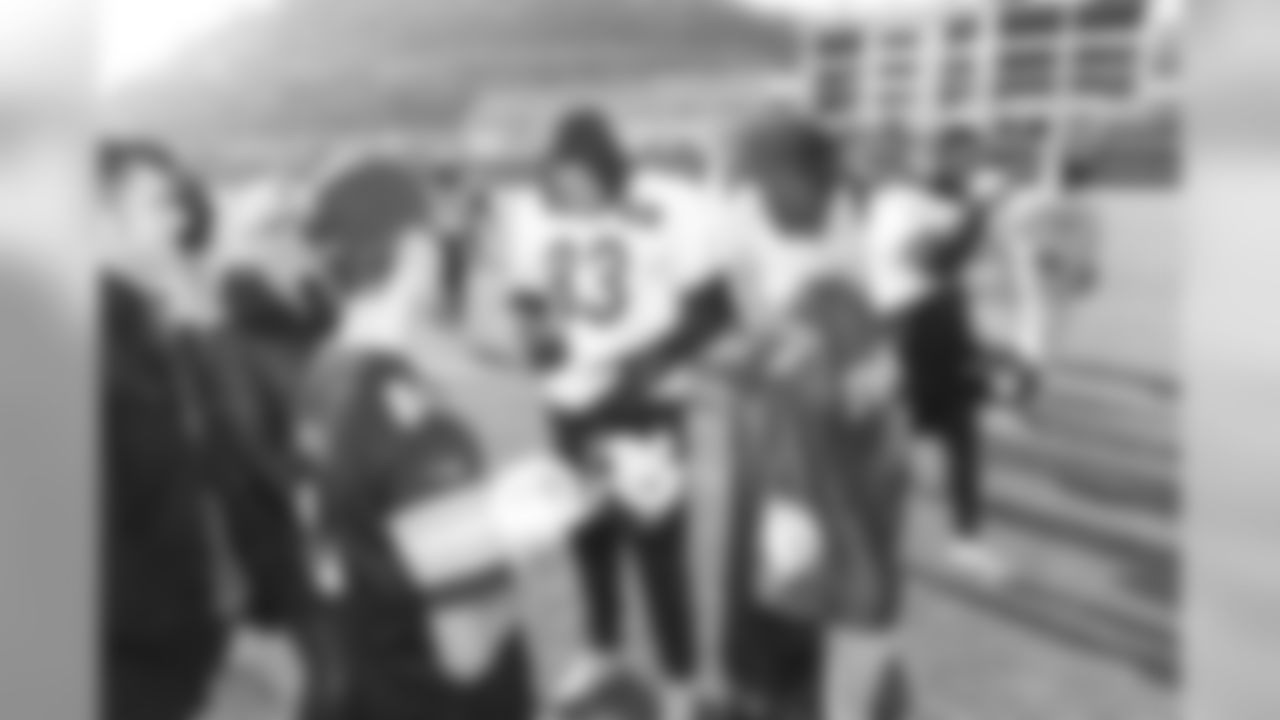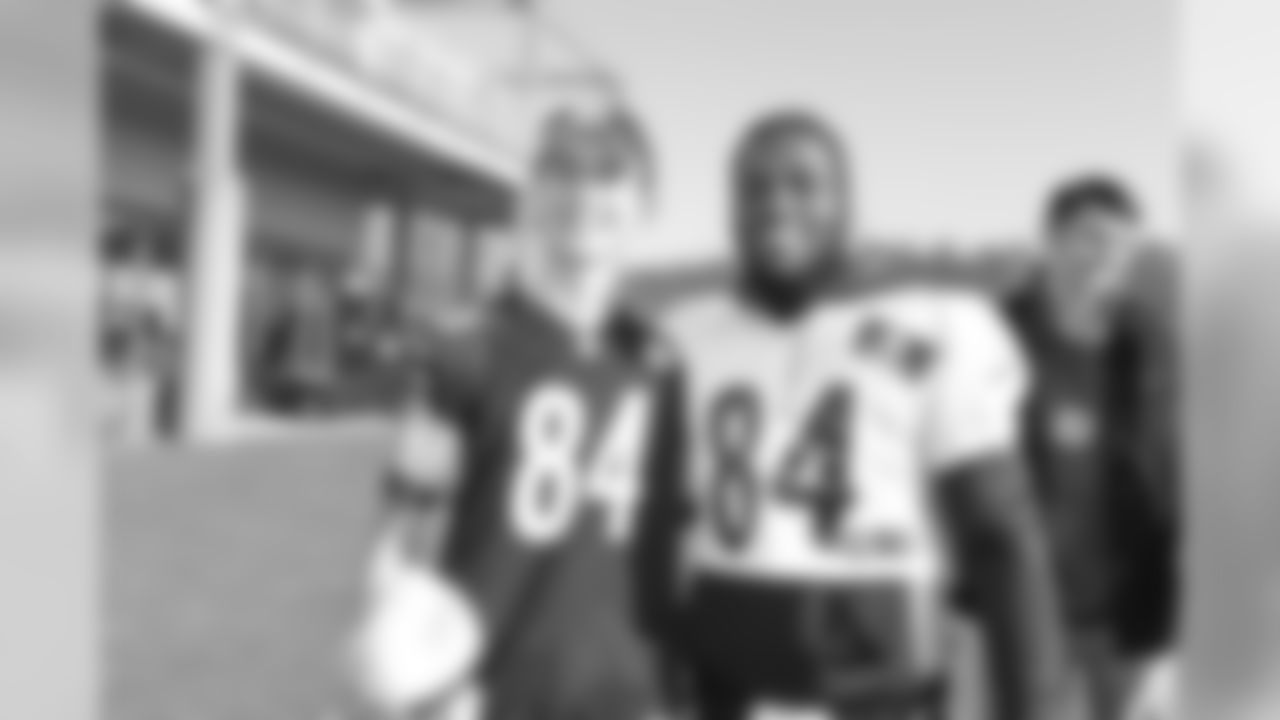**
Q. You said in your news conference last Tuesday, "Defensively, I thought our red zone failures were coupled with sudden-change failures. We turned the ball over, and they were able to turn those turnovers into touchdowns." What goes into good sudden-change defense?**
A. It's mentality. It's not like the selection of plays or coverages or fronts that you choose from change, but it's just the defense responding to the adversity that the game of football presents. Often times on defense, you have no control over what conditions or circumstances with which you take the field. You have all the control over how you get off the field. So more than anything, it's those guys checking in with one another and agreeing to rise up and meet the adversity head-on and putting the fire out.
Q. Put your defensive hat on. What are you expecting from the opposing offense in a sudden-change situation? Aggressively go for a score, or simply run their best play, even if it's something simple like a outside-zone running play?
A. It usually depends on the personality of the play-caller and the opposing quarterback. It's something you study in preparation leading up to the game. I always want to know when I'm watching video – particularly when the field is short – all of a sudden I'm watching video and the ball is at the opponent's 35-yard line. I want to know how the ball got there. Then with the subsequent plays, I look for trends or personality in that regard.
Q. You indicated that it was during a brief staff meeting on Monday that the initial decision was made to consider the possibilities of personnel changes in the secondary. What's usually the tipping point in that kind of a decision?
The Steelers grant the wish of a Steelers fan from Kankakee, IL
































A. Fundamentals. Inconsistent fundamentals. And inconsistent fundamentals show up for really a small number of reasons. There's fatigue: somebody's playing too many snaps. Or they're confused or overwhelmed schematically in terms of what they need to do, and they're not playing with enough detail. Either way, your response is to minimize snaps. So when I see inconsistent tackling, that's a significant component of the discussions that then follow.
Q. In evaluating a performance, let's stay with the defensive backfield, how much do you allow for the quarterback just being really good, like Russell Wilson?
A. I acknowledge we ran into a really good quarterback last Sunday, but that had nothing to do with the poor tackling at times, and the poor detail in our execution at times. So it's not yardage related, or result of the game related. I'm really looking at the quality of our play, or the execution of the detail in our play. And it was lacking at times.
Q. About Ross Cockrell and Antwon Blake, you said they would have a chance to redeem themselves. How might that happen during the course of an in-season week?
A. What I was saying is they'll have an opportunity to play in this football game to redeem themselves. I wasn't talking about in a practice setting. What I was saying was that I wasn't going to make wholesale changes based on what happened in Seattle. Yes, I was going to give additional opportunities to Brandon Boykin, because I think the inconsistencies in play warrant that. But I also am committed to giving those guys – Cockrell and Blake – an opportunity to redeem themselves in the stadium today.
Q. If a change is made, is it going to take as much to go back to the way it was as it took to make this change, or is going back a potentially quicker process because it's a known situation?
A. I guess what we're looking at this week is not a wholesale change. We're opening ourselves up to the inclusion of others in terms of playing time. That doesn't mean the exclusion of the people who have been playing. It's not a have or have not situation for us. It's just minimizing some of the snaps those guys have played and allocating them to other deserving men, and then seeing the result of that. Do the other guys prove they're capable players? Does the reduction of snaps improve the quality and the detail of the play of the men who had their snaps reduced? There is a period of evaluating the result of the move and taking necessary action after that based on the information you gather. But it's not black or white, by any stretch.
**
Q. After opening 3-5, the Colts have won three in a row and come to Heinz Field tied for first in the AFC South with a 6-5 record. What differences have you noticed in them that contributed to the turnaround?**
A. There are some significant differences. Pep Hamilton is no longer the offensive coordinator and play-caller. Three games ago, Rob Chudzinski took over, and when you get a different man's perspective, that provides an opportunity for change. Matt Hasselbeck has played a lot of football, and so in two-and-a-half of those three weeks, you had a change at a significant position – quarterback – and that can be a particular catalyst for change. Hasselbeck has been making some good and quick decisions, things resulting from him being the savvy veteran quarterback he is. I would imagine those things have created a change that has been something of a catalyst for their upswing.
Q. Can Hasselbeck be pressured?
A. Yes he can. You just have to do it artfully, thoughtfully. Anybody who has been around as long as Matt, they're not easily tricked or fooled, so it has to be execution-oriented. We're going to pick our spots.
Q. How do you fix third down, both offensively and defensively?
A. It's in the details. It always is. We'll look hard at the schematics and the position we put people in, but aside from that, it's in the detail, in the ability to finish plays, make the critical plays at the critical moments.






